Instead of growing traditional cabbage, trying to grow Chinese Napa cabbage may bring you more joy. So I spent my time researching it. So this article is all about how to grow Napa cabbage from scraps.
Here’s how to grow Napa cabbage from scraps.
Cut a slice from the cabbage and immerse it in a bowl of water. Keep the bowl in the shade until the cabbage scraps are sprouting roots. After 10-12 days, plant the Napa cabbage scraps in 6.5 Ph and well-drained soil using compost as a fertilizer.
To grow Napa cabbage from scraps, it doesn’t need too many requirements and doesn’t take a long time. So to know how to grow napa cabbage from scraps successfully, plus many helpful tips keep reading.
Table of Contents
Required conditions to grow Napa cabbage
When you are growing any plant, there are specific conditions you have to provide, in order to perform their best growth.
And once you choose growing a plant from their scraps, you have to be more careful of them.
So here are some required conditions to grow Napa cabbage from scraps.
Soil condition for cabbages
Soil is an important factor to consider when you are growing anything from any method.
So when we considering, growing Napa cabbages from scraps or cuttings, you need to grow them in acidic soil.
Such as 6.5 – 7.0 of Ph value, which preferred by Napa cabbages.
Usually, many varieties of cabbages are known as lower feeders.
But Napa cabbages will really appreciate you if you can feed them with rich soil.
More rich soil makes more big yield.
Therefore I recommend you use compost or well-rotted manure to regrow Napa cabbage.
Fertilizing Napa cabbages
Because of Napa cabbages aren’t heavy feeders, fertilizing is not much necessary thing to do.
But if you aren’t able to provide that rich soil earlier, you should find an alternate fertilize for your cabbages.
In this case, my recommendation is to use a general potting mix or general multi-purpose fertilizer.
However, you should be able to use any of those two fertilizing methods when you are growing Napa cabbage from scraps.
Because it’s a long run and they have huge crops.
Some people are using slow-release fertilizers for cabbage plants after treating them with general fertilizers.
It’s a good option to keep the nutrients for longer in the soil.
But my recommendation is not to use slow-release fertilizers with cabbages.
Because cabbage isn’t a heavy feeder, it may tend to feel the plant, like overloading things.
Required temperature conditions for Napa cabbage
Temperature is one of a main factor that can decide the success or failure of growth in a specific location.
And the temperature is very effective in different stages of growing a plant like cabbage.
There are specific heat and temperature values that plant should have in those different stages.
So here are the how much temperature should Napa cabbage needs to grow as they like.
| When the situation | Temperature |
|---|---|
| Soil Temperature for germination | 45 F – 70 F |
| Soil Temperature for grow | 65 F – 75 F |
| Air Temperature to grow in the day | 60 F – 75 F |
| Air Temperature to grow at night | 50 F – 65 F |
Other requirements to grow Napa cabbage
When considering sunlight for growing Napa cabbage from scraps, we can have the same answer we got for traditional cabbages.
Napa cabbages like to have full sun through out the day.
But also they will grow on partial shade and can tolerate conditions with at least 5 hours of sunlight.
Napa cabbages have the capability to handle both warm and colder climates.
But to grow Napa cabbage from scraps, milder climate could be the best condition to grow up.
Therefore growing Napa cabbages in early spring can make the game easy for you.
Now we are ready with the required conditions for Napa cabbages.
So next, we are jump into the exact steps of how to grow Napa cabbage from scraps.
Step 1: Find a well-matured Napa cabbage
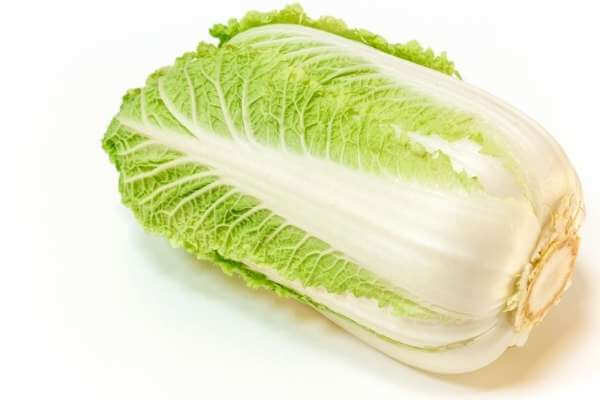
First things first.
As the first step of how to grow Napa cabbage from cuttings, you’ve to find a matured Napa (Chinese) cabbage.
The reason I said that to use a well-matured fruit is, they have more capability to grow a new plant from a cutting, than the usual unmatured one.
Also, the cabbage does not have to be one that freshly picked out on a garden or farm.
You can use even a store brought Napa cabbage to this “regrow Napa cabbage project”.
And the other thing I need to mention is, you don’t need to have a whole cabbage to this process.
You can successfully try growing Napa cabbage from scraps, by using half of the fruit.
But when the cutting getting bigger, more leaves could be sprouted way quicker.
So this decision is totally up to you.
Step 2: Cut Napa cabbages into slices
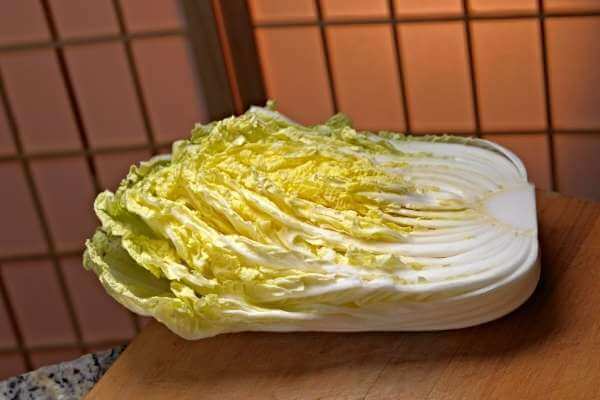
Now, after you’ve picked the right Napa cabbage to regrow, you have to take out a cutting from that fruit.
And that is what we are using to grow the plant.
Unlike the way that we regrow plants from other fruits, you can’t use all the parts of a cabbage as cuttings.
We can only use the base of cabbage as a cutting.
So you need to cut a slice from the base of the fruit, in order to grow Napa cabbage from scraps.
Just take off a slice from the bottom, where you can see a white stem as thick as an inch and a half.
Usually, the maximum amount of cuttings that you can get from cabbage is two.
Making the cuttings too small won’t bring you success from regrowing cabbage from the base.
Step 3: Propagating Napa cabbage scraps in the water
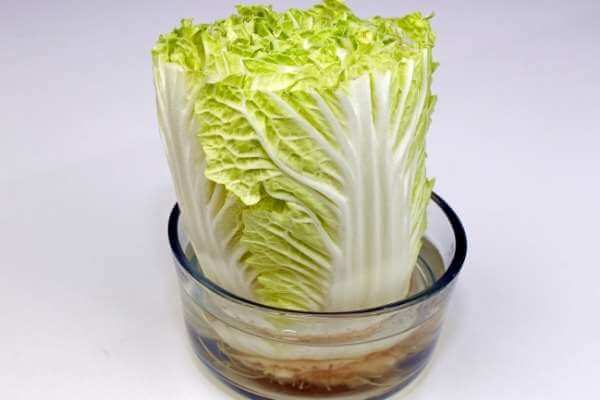
Now you are almost going to be taught the same lesson which is about how to grow Chinese cabbage in water.
Because you are going to grow Napa tomatoes scraps in water, until they ready be planted on the soil.
Here’s how you do it.
Gather all the slices you took out from the Napa cabbage fruit.
Then fill in some water on to a basin and place all the scraps on the water.
You should place the cut so that the base of the slice is submerged in water.
Note:- Add a thin layer of water onto the basin or to the bowl. The upper part of the cutting should not be wet.
Now you are all done. It’s the waiting time.
From my own experience, these are some of the most exciting and wonderful days in growing Napa cabbages from scraps.
Because you can see the growth of that cabbage slice daily.
How nice is that!
Here’s the usual timeline.
- You can see some little seedlings are sprouting 2 – 3 days after you start propagating the Napa cabbage scraps in the water.
- Then throughout a week, this cabbage cutting will produce more leaves and also meanwhile it’s sprouting some roots.
- Generally, after scraps being on the water for 10-12 days, they will be ready to regrow with some longer roots and nice leaves.
Note:- Over time, change the water on the basin for at least every 2 days.
Step 4: Make the soil ready to plant
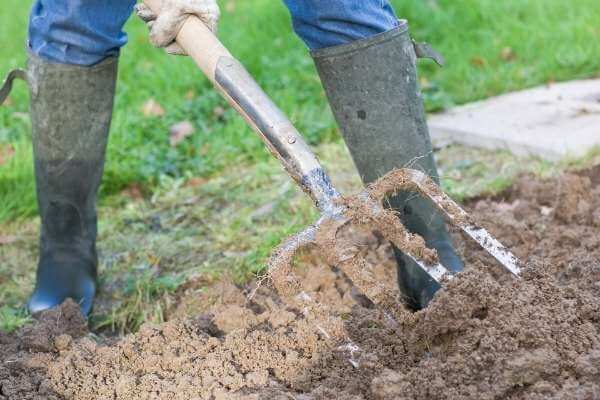
At this stage, you are ready to grow Napa cabbage from scraps after propagating them on water.
On this step you have to make the soil ready to plant the cabbage cutting.
You’ve to use exact conditions with the soil, which I had mentioned before.
Here are some of the things you have to do when making the soil ready to grow Napa cabbages.
First, we have to make sure that the soil is slightly acidic.
So one of the best and cheapest ways to make the acidic soil is using compost.
Therefore you can use compost soil to grow Napa cabbage from scraps, which also helps to boost up the acidity of the soil.
The other thing we want to look at is, tilling the soil.
Like many other crops, cabbages don’t prefer to grow on hardy soil.
Also because the water propagated roots are not strong enough, they won’t have the ability to extend their rooting in solid and hard soil.
Therefore we need to pay attention to tilling the soil, especially when we grow Napa cabbage from scraps.
I recommend to till the soil before planting cabbage. You can do it easily by using a hoe.
Tilling the soil gives new roots a chance to connect well with the air, which is very important to extend a root system.
Step 5: Planting the Napa cabbage cutting
On this step I want you to plant the Napa cabbage cutting on the soil.
You will be able to reach this step 10-12 days after leaving the cabbage cutting in water. Usually, it will take that amount of time to grow enough leaves.
But if your cabbage scraps, does not sprout enough roots in that period of time, don’t be in a hurry!
It’s really normal. It may depend on the water temperature, air humidity and some various factors.
However, your goal should be waiting until the scraps sprouting some roots.
After you reach that milestone, you can plant your Chinese Napa cabbage cuttings on the soil.
Usually many people are planting cabbages on the early spring.
So if you start propagating the cuttings a week before last frost date, you will be able to start growing Napa cabbage from scraps in the early spring.
Where to plant Napa cabbages
Everything is ready. But you might be worrying about where should I grow Napa cabbages.
I able to survey 17 experienced gardeners, who have spent a lot of time with growing various kinds of cabbages on their backyard.
So here’s what I found about where to grow Napa cabbages from scraps on the garden.

As you can see 11 out of 17 gardeners recommend growing cabbages on the ground.
4 out of 17 recommend growing them on a raised bed and the rest of the gardeners prefer to grow cabbages on containers.
Also, I asked each gardeners, what the reason to their recommendation.
They said the main reason that most of the gardeners recommend the ground, because of the space.
As to these gardening experts, there should be a gap between two cabbage plants, which is at least 6 inches.
Bigger the gap, bigger the head grows.
But when you grow cabbages in a raised bed, you can’t grow many of them while keeping them gap between two of them.
So you have to use those alternative methods, only if you are running a small space garden.
What about growing Napa cabbage in containers?
They immediately said that if you grow cabbage in a pot or a container, do not grow more than one in a single container.
Therefore I think, now you will agree when I say ground is the best location to grow Napa cabbage from scraps.
Step 6: Leave Napa cabbages to grow well

After you do planting Napa cabbages, you have not too much hard things to do.
The main thing you’ve to do is waiting until it produces a cabbage.
But there is still some little work to do while the Napa cabbage plant growing up.
I think you could guess it.
You have to work on necessary watering and fertilizing while you waiting to see a crop.
As I mentioned before in this article, using compost as a fertilizer will be the best solution.
But remember to add new compost again and again to keep the things fresh and changing.
If you like, you can also use a general potting mix or fertilizer in this period.
When we look at watering, you have to provide 1 to 1.5 inches of water a week, when you grow Napa cabbage from scraps.
Also, increase or decrease the amount of water by considering the climate, humidity and moisture of the soil, etc.
Averagely it will take at least 2 months to produce a fruit when you grow Napa cabbages from scraps, in this way.
So you have do these things again and again in those two months period.
Note:- This period could be longer or shorter than the average, because of the environmental factors in your area. It’s rally normal.
Step 7: Tying leaves together on the cabbage plant
If you are new to growing cabbages, you may get amazed when you got this title.
But if you take a look at any kind of cabbage variety, you can see their leaves are stick to the head.
In Chinese Napa cabbages, you can see it even more.
That thing happens, when you tie up leaves together onto the head of the cabbage.
You also need to do this, when the plant hits the 2 months period. Because that’s when the fruit is growing quickly.
Here’s how you need to do:
First of all find a twine.
Then gather the upper leaves onto the cabbage head, which are closer to the head.
After that tie them up with the head. Remember to don’t tight it for too much.
This short video will be help you on that.
Step 8: Harvesting Napa cabbages
This is the most joyful step along the process of growing Napa cabbages from scraps.
You will be able to harvest the Napa cabbages that grown from scraps, from 2 and a half months.
The easiest way to find you cabbage is ready to harvest is, the size of it.
Compare the size of the fruit based on the size of the leaves.
In most cases, the fruit ( which we called head ) is getting bigger proportionately with the leaf growth.
But if the fruit is too much small comparing to the leaf size, you may do something wrong while you grow Napa cabbage from scraps or disease may occur.
However, when your Napa cabbage plant does not grow up anymore after 2 and a half months, you should ready to harvest cabbages.
Another way you can measure if it is ready to harvest or not is, from the colour.
Usually, many cabbage varieties including Napa cabbages are getting into yellow and light green colour when they ready to harvest.
You should not harvest Napa cabbages, while they are in dark green.
Also, cabbage heads getting softer when they are getting closer to their harvest date.
How to harvest Napa cabbage
Here is the way you should harvest the yield of it, after you grow Napa cabbage from scraps.
The best and the safest way to harvest Napa or any other cabbage is, cutting from a knife.
Here’s how you do it.
- Take a sharp kitchen knife or a garden knife.
- Then cut down the stem from the base of the cabbage, while holding the cabbage from the other hand.
- The stem of the cabbage may harder to cut when the fruit is well-matured. Don’t worry about that.
Tip: – You have to harvest your Napa cabbages before the rainfall begins. If the cabbage exposes to rainfall or being overwatered, the cabbage head could be damaged.
Napa cabbage care
As a crop, cabbage is often get damaged by pests and diseases.
So I thought caring Napa cabbages, while you grow Napa cabbage from scraps, is important.
Therefore here are some quick actions that you could take to care the Napa cabbage plants.
Pest controlling
Cabbage is one of the most favorite crops among the harmful pests.
Here are some pests that damage cabbage plants.
- Cabbage looper
- Cabbage webworm
- Cabbage maggot
- Harlequin bug
- Aphids
Now, here are some actions to care your Napa cabbage plant from pests.
- Fit some cabbage collars to prevent root fly and maggot
- Cover the cabbage transplants from a white bottle to protect them from birds
- Use netting to avoid worms and butterflies
- Grow companion plants
Among theses harmful pests, cabbage worms are the most damaging and distractive pest.
This video will help you to avoid cabbage worms while you grow Napa cabbage from scraps.
I found a perfect article that tells you more about cabbage hurting pests and how to control them. Feel free to read it here.
Disease control
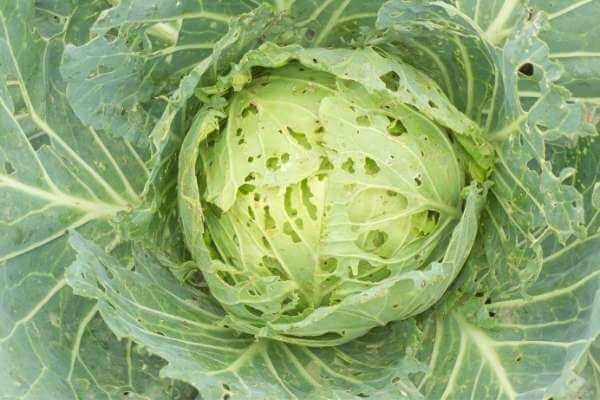
When we consider cabbages as a crop, farmers and gardeners get into trouble because of dozens of diseases that occur on cabbage plants.
Here are some of the diseases that can happen when growing Napa cabbage from scraps.
- Alternaria leaf spot
- Bacterial leaf spot
- Blackleg
- Bottom rot
- Powdery mildew
- Waterlogging/ overwatering
I found a list of diseases on cabbage plants and solutions for them on Gardener’s path. That article will help you a lot.
However, I would like to give you some quick solutions for some of these diseases.
If your Napa cabbage plant leaves turn yellow or wilted, your plant is having a bad time with overwatering.
Once that happens, just stay away from water for 2 days. Then water the plant as usual.
Also if you can, mix nitrous fertilizers with the water.
Now, what if the plant has a fungal disease when you growing Napa cabbage from scraps?
The easiest method is spraying the water and baking soda mixture.
All you need to do is add one teaspoon of baking soda to 1 litre of water. Then sprinkle it where you can see the effects of the disease.
Pruning Napa cabbage
Actually, many gardeners don’t know the importance of pruning cabbage. So I thought to inform you a little bit about it.
Do Napa cabbage should be pruned?
Because of Napa cabbage plants should being healthier before it ready to harvest, pruning Napa cabbage is an important task of the process of growing Napa cabbage. The purpose of pruning Napa cabbage is extend the growing and make the plant much healthier.
Here’s how you do it.
Find a pruner or a scissor.
Then check the unhealthier leaves on your Napa cabbage plant. You don’t need to have any leaf on the plant which is not looks perfect.
Trim out all the diseased, yellowed leaves on the Napa cabbage plant.
Source – Gardening knowhow
FAQ
Here are some frequently asked questions and answers for how to grow Napa cabbage from scraps.
Does Chinese cabbage regrow after cutting?
Chinese cabbage can be regrow after cutting them. You can regrow the Chinese cabbage by propagating the cabbage cutting in the water and planting it the soil.
And also once you cut the harvest of Chinese cabbage, still it have the capability to regrow a new cabbage on the plant.
How to grow Napa cabbage in containers?
Start growing Napa cabbage in containers from seeds. Don’t grow more than one cabbage plant in a usual container. The container should have drainage holes.
Here are the steps to grow Napa cabbage on containers.
- Sow the seeds in the early spring.
- Use compost mixed soil.
- Provide full sun.
- Water 1.5 inches per week.
- Save the plant from pests.
